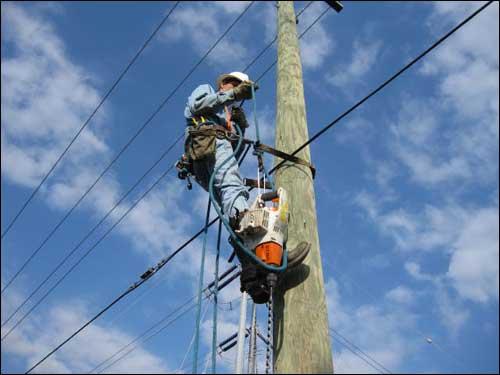- Related articles
- Used In 10GBASE-LR Standard Optical Transceiver Models
- All Cisco DWDM-XENPAK-30.33's information (List price, Specs, Datasheet PDF, Compatibility
- Optical Transceivers for Cisco WS-C3750V2-24TS-S Switch
- Apply to 100BASE-BX-U Standard Optical Transceiver Models
- Outstanding Cisco GBIC And SFP Transceivers
- Optical Transceivers for Cisco WS-C2960-24PC-S Switch
- Optimizing Virtual Infrastructures by Using Multiport Network Card
- The Difference Between X2 and XFP
- All Cisco SFP-GE-L's information (List price, Specs, Datasheet PDF, Compatibility matrix)
- What is GJFJH Fiber Optic Cable?

Introduction
Fiber Optic Cable for External Environment is the fiber optic cables which are installed in the field. In other words, they are referred as the Arial cables therefore, they can’t be installed indoors. In most cases, you will find that Fiber Optic Cable for External Environment have a unique feature which enables them to effectively cope with the harsh conditions such as rain and sun. This blog, therefore, outlines the features of Fiber Optic Cable for External Environment.
Fiber-Optic Characteristics
Optical-fiber systems have many advantages over metallic-based communication systems. These advantages include interference, attenuation, and bandwidth characteristics. Furthermore, the relatively smaller cross section of fiber-optic cables allows room for substantial growth of the capacity in existing conduits. Fiber-optic characteristics can be classified as linear and nonlinear. Nonlinear characteristics are influenced by parameters, such as bit rates, channel spacing, and power levels.

Interference
Light signals traveling via a fiber-optic cable are immune from electromagnetic interference (EMI) and radio-frequency interference (RFI). Lightning and high-voltage interference is also eliminated. A fiber network is best for conditions in which EMI or RFI interference is heavy or safe operation free from sparks and static is a must. This desirable property of fiber-optic cable makes it the medium of choice in industrial and biomedical networks. It is also possible to place fiber cable into natural-gas pipelines and use the pipelines as the conduit.
Linear Characteristics
Linear characteristics include attenuation, chromatic dispersion (CD), polarization mode dispersion (PMD), and optical signal-to-noise ratio (OSNR).
Attenuation
Several factors can cause attenuation, but it is generally categorized as either intrinsic or extrinsic. Intrinsic attenuation is caused by substances inherently present in the fiber, whereas extrinsic attenuation is caused by external forces such as bending. The attenuation coefficient α is expressed in decibels per kilometer and represents the loss in decibels per kilometer of fiber.
Intrinsic Attenuation
Intrinsic attenuation results from materials inherent to the fiber. It is caused by impurities in the glass during the manufacturing process. As precise as manufacturing is, there is no way to eliminate all impurities. When a light signal hits an impurity in the fiber, one of two things occurs: It scatters or it is absorbed. Intrinsic loss can be further characterized by two components:
• Material absorption
• Rayleigh scattering
Conclusion
The Fiber Optic Cable for External Environment is easy to install since it has a well-defined structure. Today if you take a walk around the rural areas, you will find many people installing them on their buildings. However, there are different types of Fiber Optic Cable for External Environment and therefore, you should make the best choice for you.





































































